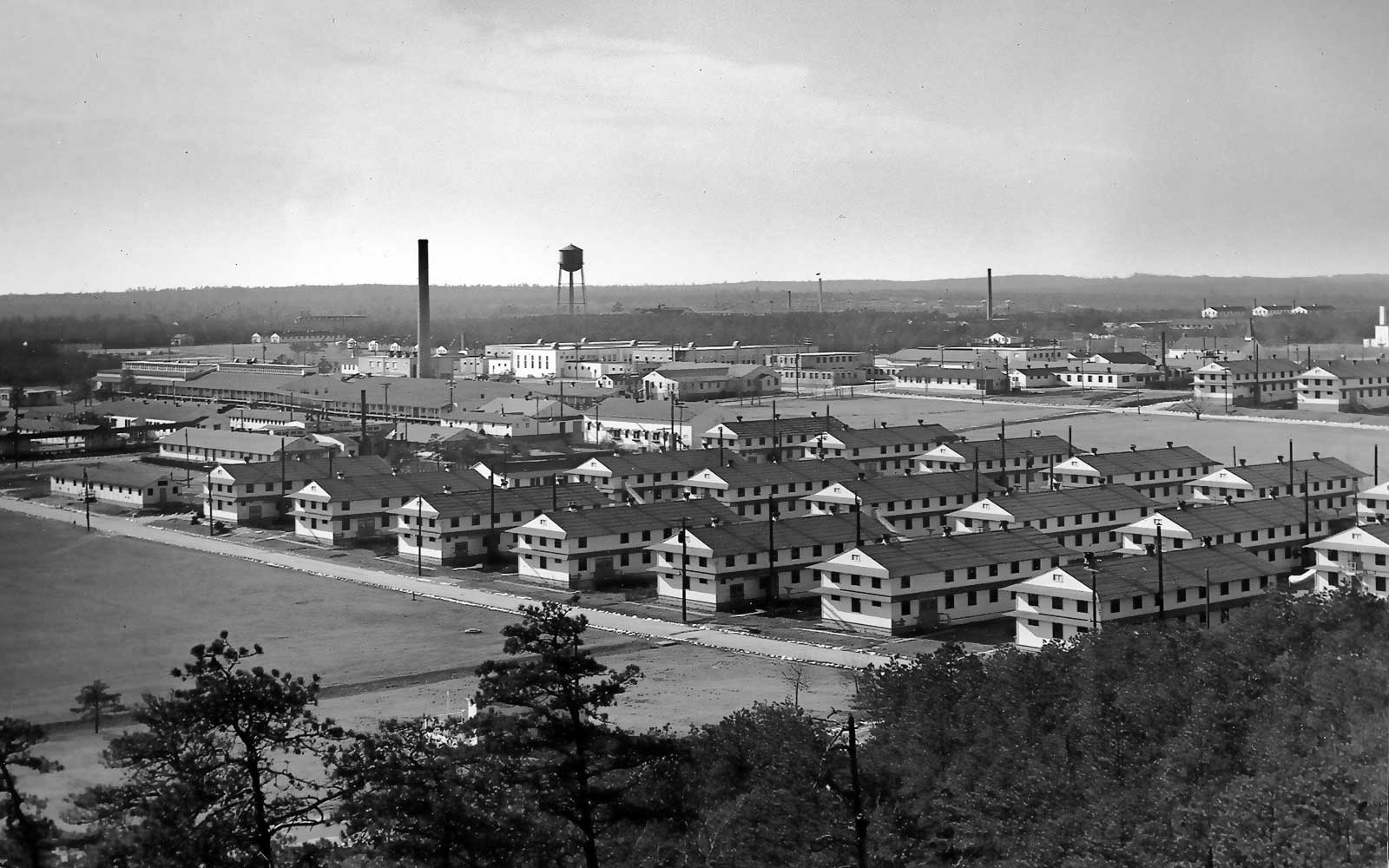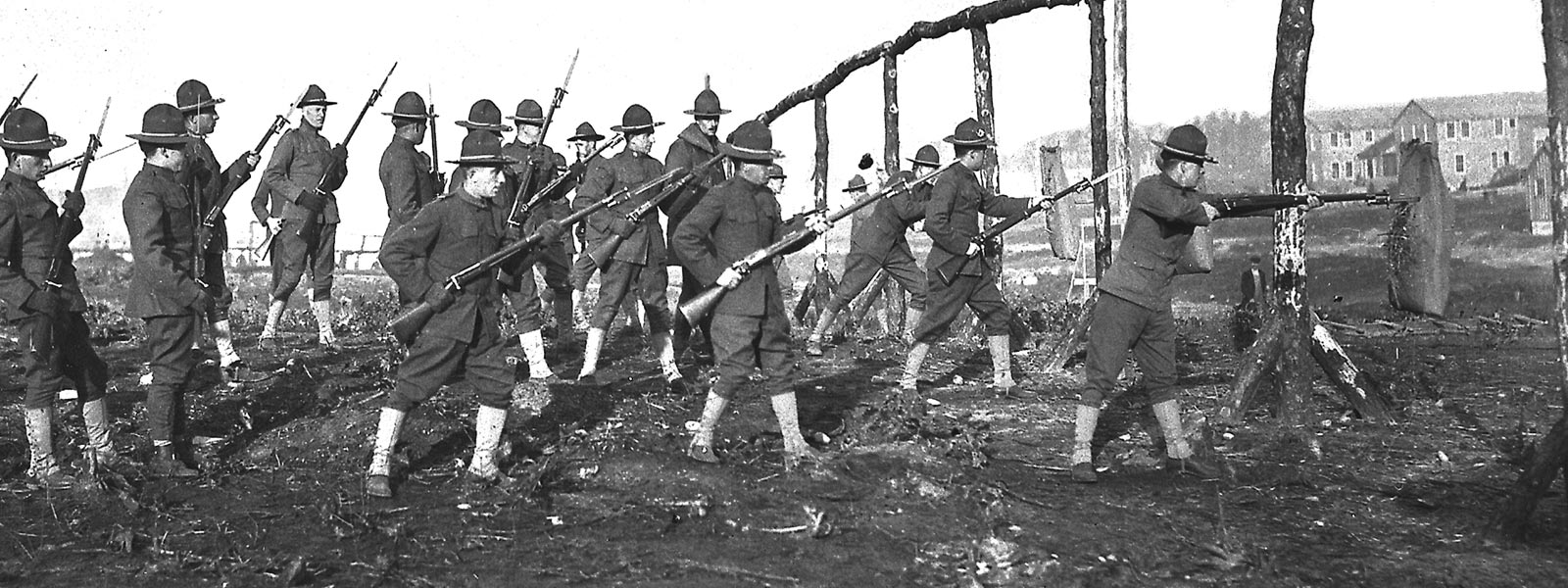
Camp Upton
On the same site where scientists and researchers at the U.S. Department of Energy's Brookhaven National Laboratory today work to discover the solutions that power and secure our nation's future, thousands of soldiers served the nation in a different manner. Here in the Pine Barrens of central Long Island, the U.S. Army's Camp Upton was founded in 1917.
During World Wars I and II at Camp Upton, soldiers trained and prepared for major combat campaigns overseas. The Army later used the site as a convalescent and rehabilitation hospital for wounded veterans returning from World War II.
World War I
When the United States entered the First World War in 1917, a standing army was non-existent, and large forces would be needed to fight overseas. It was decided 16 cantonments would be erected across the country to train inductees. The proposed army base on Long Island was to be named Camp Upton, after Civil War figure Major General Emery Upton.
Construction began in the summer of 1917. Fifty-five railroad cars of supplies were unloaded daily. Thousands of tons of lumber, nails, and stone arrived at the construction site. When the first 2,000 drafted men arrived on Sept. 10, two-thirds of the camp had yet to be completed. The new soldiers were put side by side with the laborers to help complete the camp. On Dec. 20, the camp was officially declared complete, and turned over to Camp Commander Major General J. Franklin Bell.
The recruits who arrived at Camp Upton came from New York, New Jersey, and Connecticut, representing twenty-five or more national backgrounds and all walks of life.

Inductees undergoing infantry training at Camp Upton.
The camp was built to accommodate 37,000 and, in all, hundreds of thousands of men would spend some part of their military service at Camp Upton. The completed camp doubled the population of Suffolk County. One of these soldiers, Irving Berlin, wrote "God Bless America" during his time Camp Upton.
In October, General Bell put into action a sixteen-week training program, which included almost every aspect of infantry combat. French and British officers were brought to the U.S. and instructed the men in tank, trench, and gas warfare. The draftees trained in the use of hand grenades and machine guns, and professional boxers taught the men hand-to-hand combat.
From these raw recruits came the nucleus of the 77th Division. Officially formed before the first draftee arrived in camp, the 77th was to gain recognition for its valor at the Argonne Forest in August of 1918.
World War II
With the war's end in November of 1918, Camp Upton's use was limited. The camp served as a demobilization site for returning veterans, but the Army soon decided that it was of no further use, and deactivated. For almost twenty years, the site remained quiet as Upton National Forest. Then, in 1940, the Pine Barrens came to life again as the war in Europe and in the Pacific (of which America was not yet a part) gave rise to a drive for military preparation. Since the Yaphank land was still available, the decision was made to rebuild the camp. Once again, plans were drawn up for parade grounds, barracks, and other support facilities.

When war was declared, the camp once again filled with men and machinery. But the camp was not used solely as an induction center. After the war effort moved from the European to the Pacific Theater, the induction center was moved to Fort Dix, N.J. Camp Upton was expanded and converted into a convalescent and rehabilitation hospital in September of 1944. Bowling alleys, swimming pools, and tennis courts were added to serve as recreational therapy for its patients. Camp Upton became a showcase for the type of treatment the returning wounded veterans would receive.




